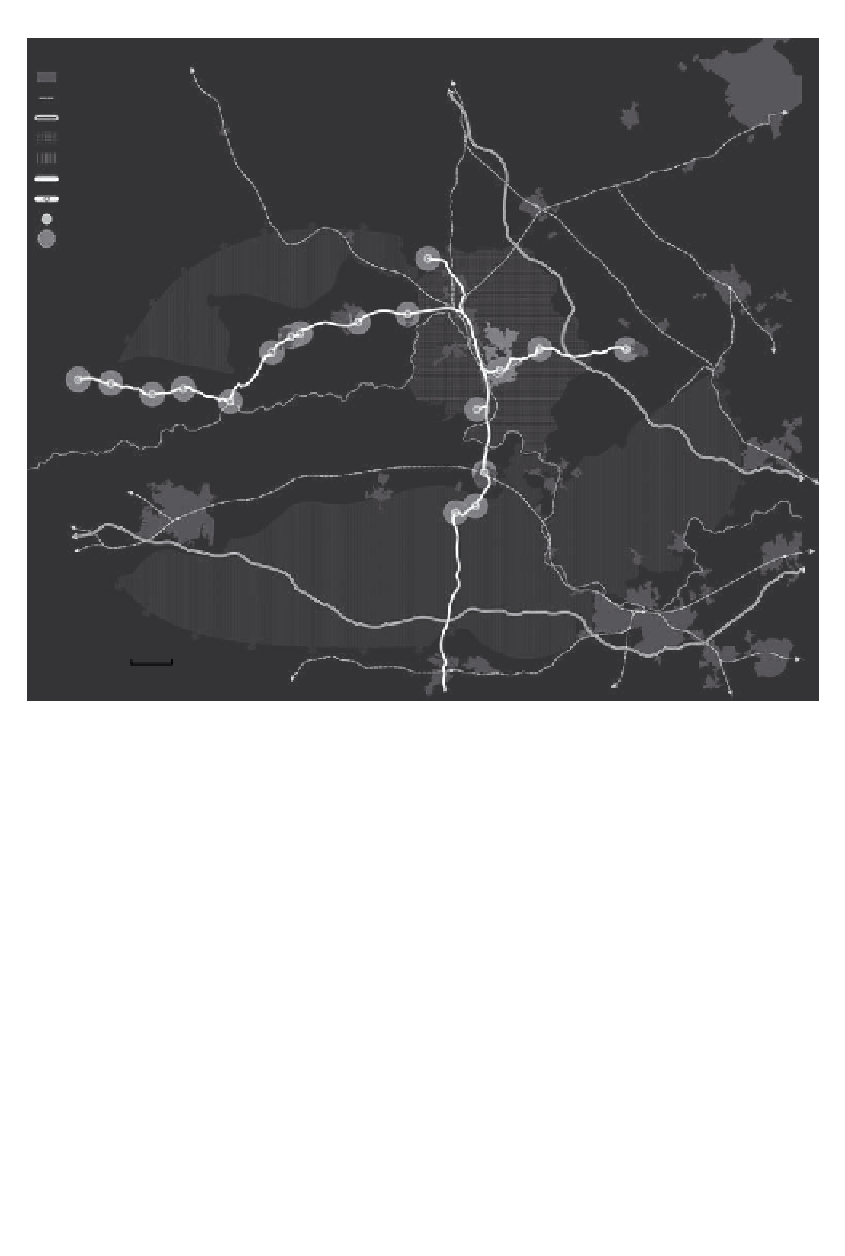Environmental Engineering Reference
In-Depth Information
TO WORCESTER
TO BIRMINGHAM
Urban Areas
Rail
Motorway
Green Belt
AONB
Bus Rapid Transit
Bus Rapid Transit Stations
1km Catchment
3km Catchment
MILTON
KEYNES
TO
BEDFORD
BUCKINGHAM
BICESTER
AYLESBURY
EYNSHAM
CARTERTON
OXFORD
WITNEY
COWLEY
CIRENCESTER
THAME
WHEATLEY
FAIRFORD
A
BLACKBIRD
LEYS
ABINGDON
ON THAMES
LECHLADE
ON THAMES
HIGH
WYCOMBE
DIDCOT
TO LONDON
MARYLBONE
SWINDON
UPTON
CHILTON
MAIDENHEAD
TO BRISTOL
READING
0
5km
BRACKNELL
NEWBURY
TO LONDON
PADDINGTON
Figure 4.28
A future transport and urban planning strategy for the Oxfordshire Sub-Region
Source
: Mapping by Bally Meeda and Urban Graphics.
Very deep reductions in CO2 emissions, and significant movement to wider sustainability
goals, would require moving towards the 'high level' of application of the policy packagesas
considered in Oxfordshire, and beyond. This may mean radical measures and initiatives,
certainly in terms of the present day's debate. Key investments would include new local rail
or quality public transport links. There is much potential in re-using disused railway lines,
protected and preserved from development. For example, a new bus rapid transit (or light
rapid transit or tram-train) network for Oxford and the sub-region could be developed, with
four lines serving Reading-Abingdon-Oxford; Cirencester-Witney-Oxford; Woodstock-
Oxford; and High Wycombe-Thame-Cowley-Oxford. New development could be purposively
shaped around the stations on these routes, with increased densities and mixed uses in the
surrounding pedestrian area catchments.
Figure 4.28
gives an example strategy where transport
investment is better linked to urban development. The public transport network is hence
developed at the sub-regional level, linking the major urban areas, and helping the car dependent
hinterland in rural Oxfordshire to have an attractive public transport option for some important
journeys (Hickman et al., 2013). The projects would need to be implemented over a period

